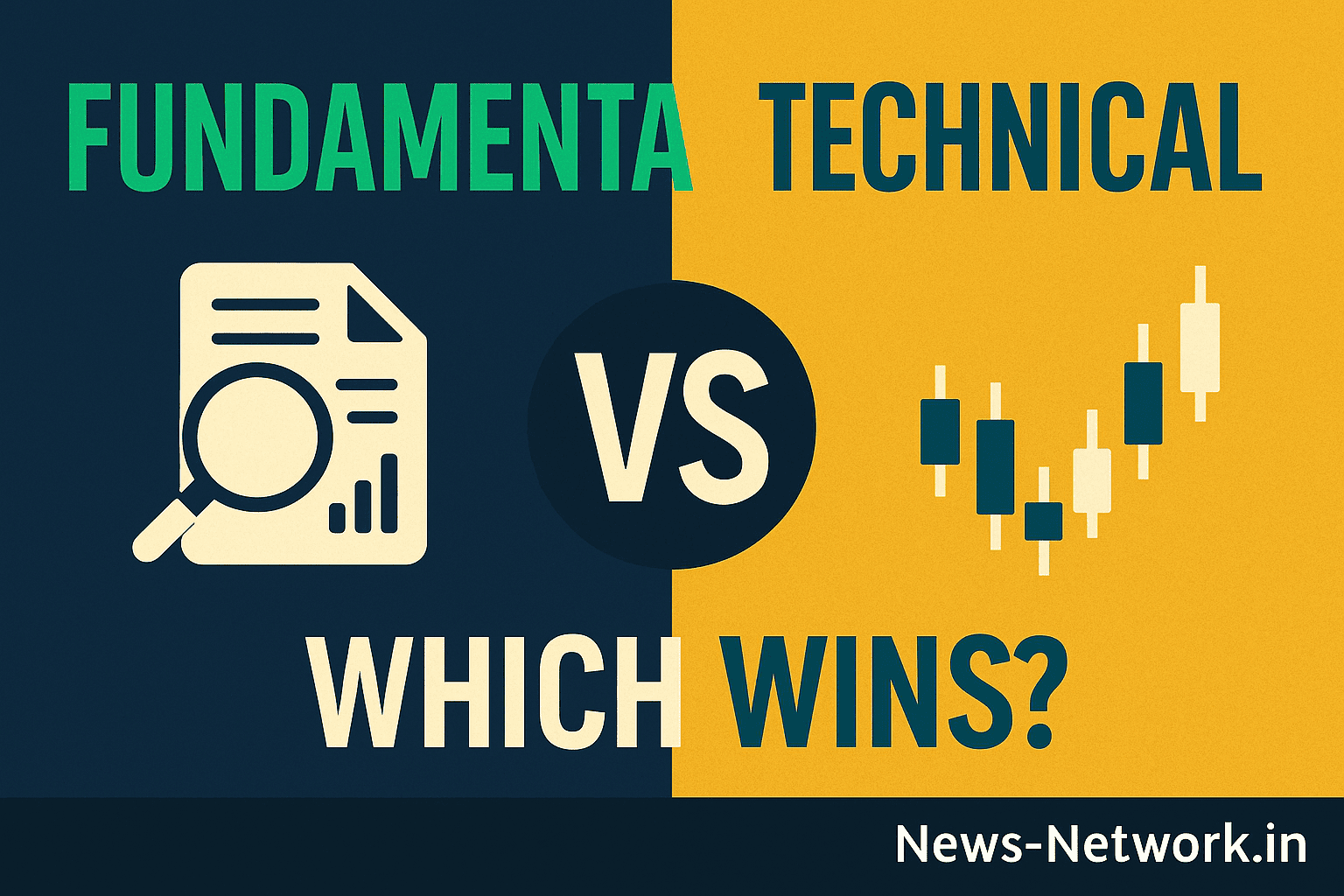Fundamental vs Technical Analysis: Which is Better?
When it comes to investing and trading in the stock market, two terms often create confusion: Fundamental Analysis and Technical Analysis. Many beginners wonder which one is better, when to use them, and whether they should combine both. In this comprehensive guide, we'll break down the differences, pros and cons, and practical tips for using each method effectively.
📊 What is Fundamental Analysis?
Fundamental analysis involves studying a company’s financial health, management quality, industry position, and overall economic conditions. The goal is to determine the intrinsic value of a stock and decide whether it’s undervalued or overvalued compared to its current market price.
Key Components of Fundamental Analysis:
- Financial Statements: Balance sheet, income statement, and cash flow statement.
- Key Ratios: P/E ratio, EPS, ROE, debt-to-equity ratio, etc.
- Qualitative Factors: Management reputation, competitive advantage (moat), industry trends.
- Macroeconomic Factors: Interest rates, inflation, GDP growth, government policies.
“In the short run, the market is a voting machine, but in the long run, it is a weighing machine.” — Benjamin Graham
⚙️ What is Technical Analysis?
Technical analysis focuses on price movement and trading volumes. It uses charts and indicators to identify trends and patterns, helping traders predict future price behavior. It’s widely used for short-term trading, including intraday and swing trading.
Popular Technical Analysis Tools:
- Price Charts: Line, bar, and candlestick charts.
- Trend Lines and Channels: Identifying support and resistance levels.
- Indicators: Moving averages, RSI, MACD, Bollinger Bands.
- Patterns: Head and shoulders, double top/bottom, triangles, flags.
If you want to learn practical strategies for using technical indicators, check out our in-depth guide on How to Use SuperTrend and EMA in 2025.
🔍 Fundamental vs Technical Analysis: Key Differences
| Aspect | Fundamental Analysis | Technical Analysis |
|---|---|---|
| Focus | Company’s intrinsic value & financial health | Price patterns & market sentiment |
| Timeframe | Long-term investing | Short to medium-term trading |
| Data Used | Financial statements, industry data, economy | Charts, price, volume, indicators |
| Decision Basis | Value vs market price | Past price movements & patterns |
✅ Pros and Cons of Fundamental Analysis
Advantages:
- Helps identify undervalued or overvalued stocks.
- Suitable for long-term investing and wealth building.
- Focuses on the real worth of a business.
Disadvantages:
- Time-consuming and requires reading complex financial reports.
- Not very useful for short-term trading decisions.
- Market sentiment can override fundamentals in the short term.
✅ Pros and Cons of Technical Analysis
Advantages:
- Good for timing entry and exit points.
- Helps in identifying short-term trends and market momentum.
- Widely used in intraday and swing trading.
Disadvantages:
- Past price movements don’t always predict future trends.
- Can generate false signals in volatile markets.
- Relies heavily on discipline and constant monitoring.
If you want to master short-term trades, read our expert guide on Intraday Trading Strategies for 2025.
💡 Should You Choose One or Use Both?
The debate is endless: some investors swear by fundamentals, while traders prefer charts. The truth is, combining both approaches often produces better results.
Example:
- Use fundamental analysis to pick fundamentally strong companies for your watchlist.
- Use technical analysis to decide the best price levels to enter or exit those stocks.
For instance, a stock might look attractive fundamentally but could be stuck in a downtrend technically. Waiting for a breakout using charts might help you time your entry better.
📌 Practical Tips for Beginners
- Start with basic financial statements — learn to read profit and loss, balance sheets.
- Learn a few reliable technical indicators instead of using too many.
- Backtest your strategies on paper before putting real money at risk.
- Never rely blindly on tips — do your own research.
- Keep emotions in check — patience is key in both methods.
🔗 Final Thoughts
There’s no one-size-fits-all answer to “Which is better: fundamental or technical analysis?” It depends on your goals, risk tolerance, and investing style. Long-term investors should master fundamental analysis to pick strong companies that can grow over time. Short-term traders should get comfortable with technical indicators and chart patterns to time their trades efficiently.
Smart investors know how to blend both worlds to make informed decisions and manage risks wisely. Keep learning, keep practicing — and remember, consistency beats perfection in the stock market!
Did you find this guide useful? Feel free to share it with your friends and fellow traders!




0 Comments